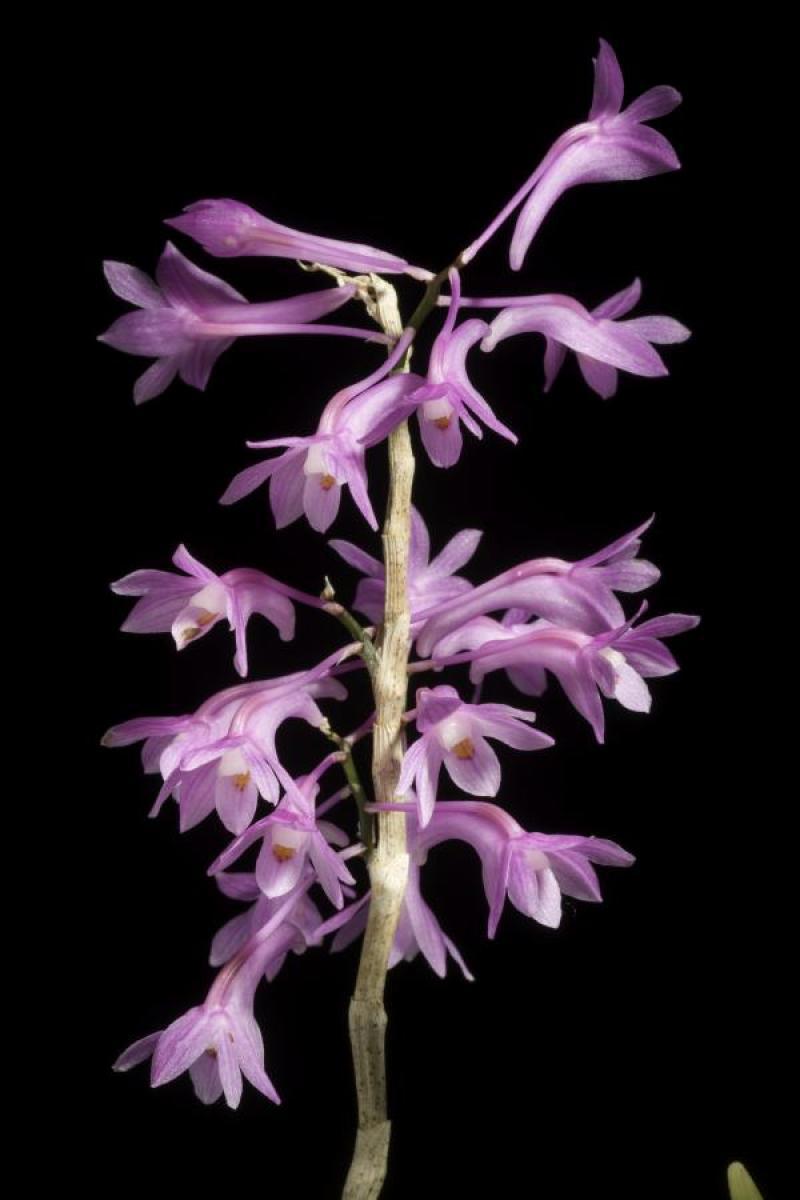Dendrobium hasseltii
Also known as: Hasselt's Dendrobium or Pedilonum cornutum Pedilonum brinchangense Pedilonum kuhlii Dendrobium curtisii Dendrobium brinchangense Dendrobium cornutum Callista cornuta Callista kuhlii Dendrobium kuhlii in the subfamily: Epidendroideae
General Information
Hasselt's Dendrobium is a sympodial warm to hot growing orchid belonging to the sub family Epidendroideae. It is named after the Dutch Botanist in Indonesia in the 19th century.
Plant Description
Sympodial. Grows to 20-61cm. Each new growth has numerous lance shaped leaves that grow to 1.5-7cm long. Pseudobulbs grow to 8-81cm. The plant forms pendant or arching growths
Substrate(s)
- Coarse
Climate
Grows at low to high elevations. Rainfall ranges from 13mm to 602mm per day, heaviest in July and lightest in March. Humidity ranges from 65% to 84%, highest in July and lowest in March. Temperature ranges from 11C to 19C, highest in March (12C to 19C) and lowest in January (11C to 17C).
Watering
These orchids prefer a wet-dry cycle between waterings, they should be watered frequently but only when the moisture is approaching dryness, where the pot feels light and/or the media looks dry. Keep an eye on mounted orchids in warm weather as they may dehydrate quickly.
Fertiliser
Apply liquid based fertiliser per recommended directions. They can benefit from a high phosphate fertiliser leading up to flowering season, followed by a high nitrogen fertiliser when new growth appears, and a balanced fertiliser in other times. These orchids can also tolerate slow release fertiliser applied 1-2 pellets per cup (250ml) of media.
Apply fertiliser regularly at half strength year round. Use a high Nitrogen fertiliser during Spring and Summer. Use a high Phosphorous fertiliser during Summer.Potting
Repotting is best done in a pot the same size or only slightly larger than the previous one.






















